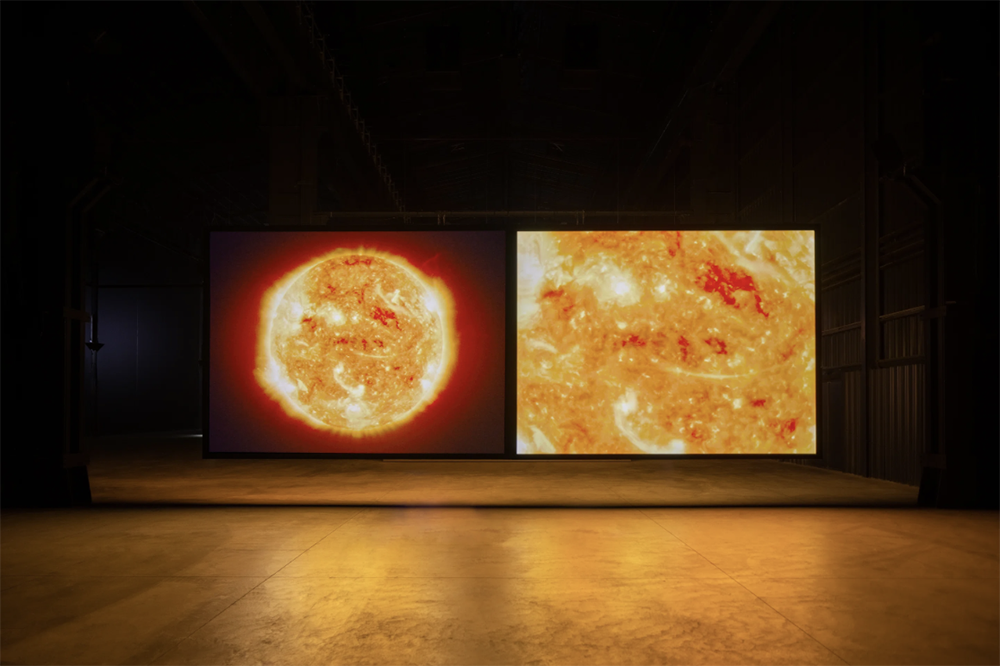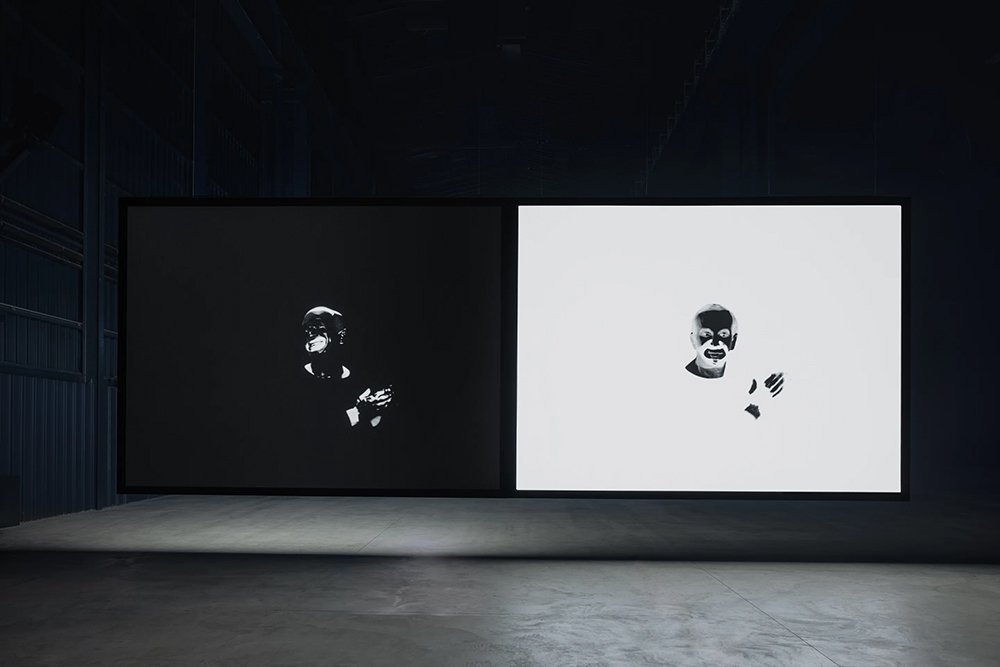Steve McQueen combines his filmmaker’s sense of scale, drama and cinematic history with his artist’s sensibility in Sunshine State (2022), a work of visceral impact and pointed message that is also rich in nuance, symbolism, connection, contradiction and emotion. Lasting for just over 30 minutes, it is not only a two-channel video but also a two-sided screen; viewers on either side watch the same pairs of footage simultaneously, though in reverse orientation, united by the singularity of the encompassing audio. The gallery space is a darkened room illuminated only by the work’s projected flickering, which (along with the architectural scale) amplifies its movie-theater aspects. And indeed the work itself is largely based on reconfigurations of a classic Hollywood film—The Jazz Singer (1927). All of this sets up a situational aesthetic that is ripe to be powerfully subverted by the intimate and culturally charged poetics of the piece itself.
Multichannel video works are impressive to look at, but the way McQueen deploys this format in Sunshine State embodies the work’s motif of layers, mirrors and parallels. The film takes as its starting point a few scenes from the denouement of the 1927 film—Al Jolson’s character applies blackface in preparation for a stage performance so triumphant that it helps him reconcile with his estranged and dying father. The scene offers a message of tolerance that has acquired layers of irony, to say the least, since its release. These segments are doubled across the two (effectively four) screens, all in choreographed combinations—they are played variously in forward, reverse, repeated and mixed-up order, shown in both positive and negative. The syntactical and sculptural transformations McQueen enacts on the original film create an atmospheric environment of flashing dissonance, a surrealist collage that disorients, but adheres to its narrative.

Steve McQueen, Installation view of Sunshine State, 2022, at Marian Goodman Los Angeles.
This striking visual would be enough; the focus on the complex revisitations of race and identity would already be clear. But a new dimension—a new universe, really—of meaning opens up when the soundtrack appears. It’s the voice of McQueen himself, relating a story from his own life—the moment of his father’s confession of a harrowing incident that had first defined his world, and later, his son’s. McQueen’s voice-over has been given a similar editing treatment as the film— repetitions, redactions, eventual revelations—bringing the viewer along on the artist’s journey of dawning comprehension. A victim of racist anti-immigrant fear-mongering as a young man, his father never spoke of these events until the end of his life; McQueen learned a lot more than facts when he heard it.
This understanding folds back again on the 1927 sequences—the blackface content is the most obvious of commentary, but the storyline also focuses on a reparative moment in a contentious father-son relationship. That this work creates a deep empathetic connection between the contemporary Black artist, whose practice remains engaged in a critique of oppressive racist social institutions, and the once-iconic film star, who casually applied blackface like it was nothing, is a potent inflection point in its scope of meaning.


